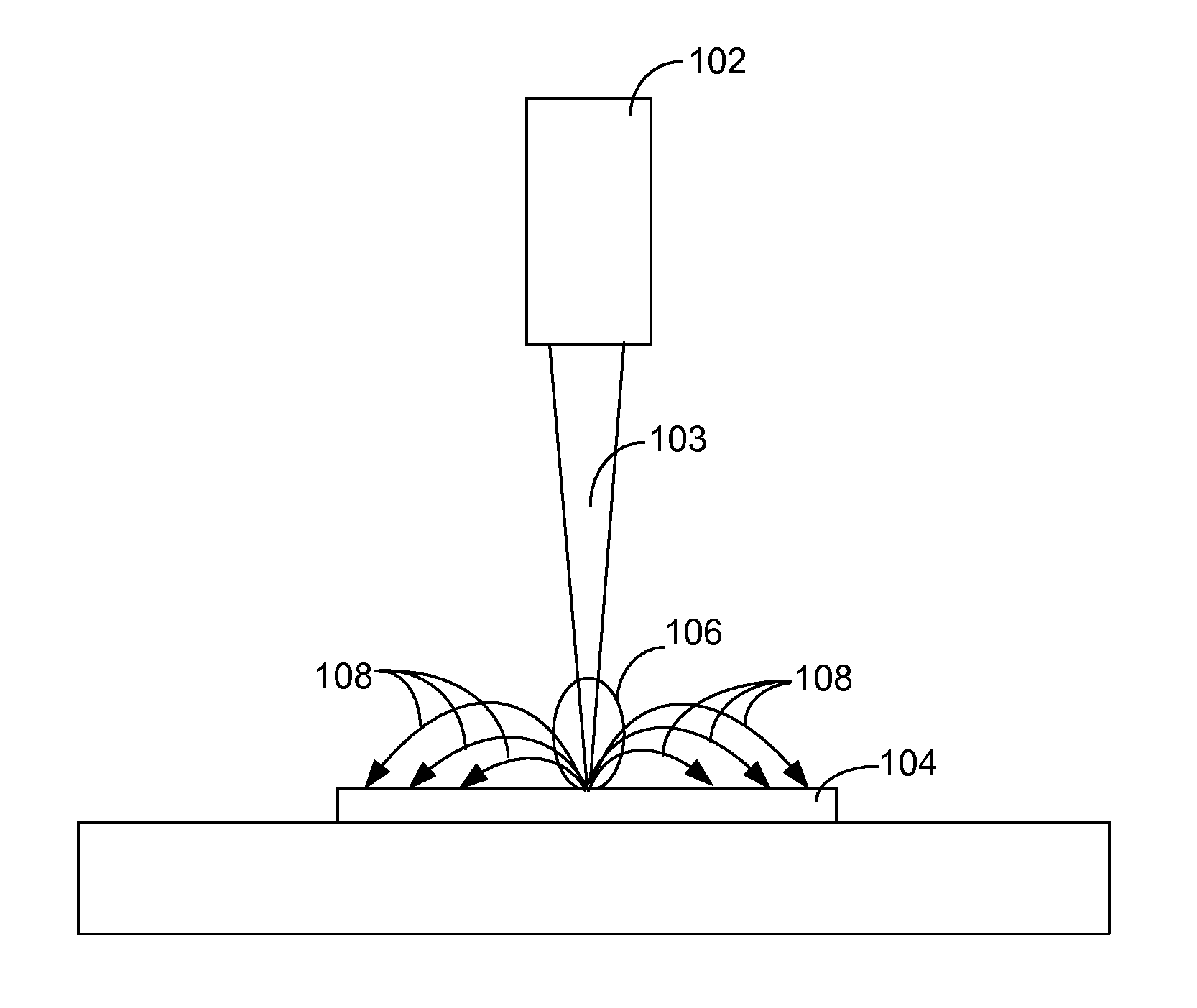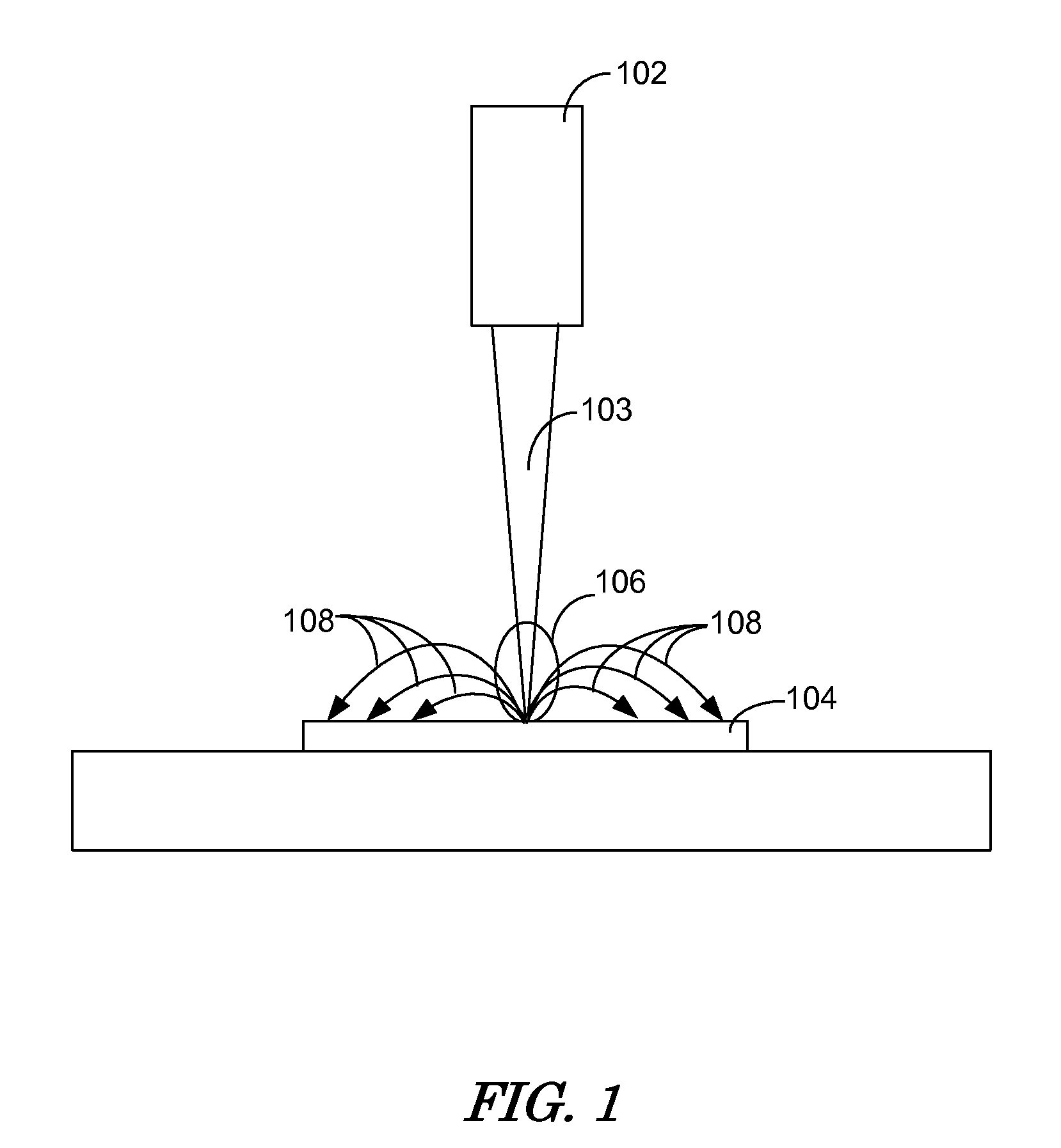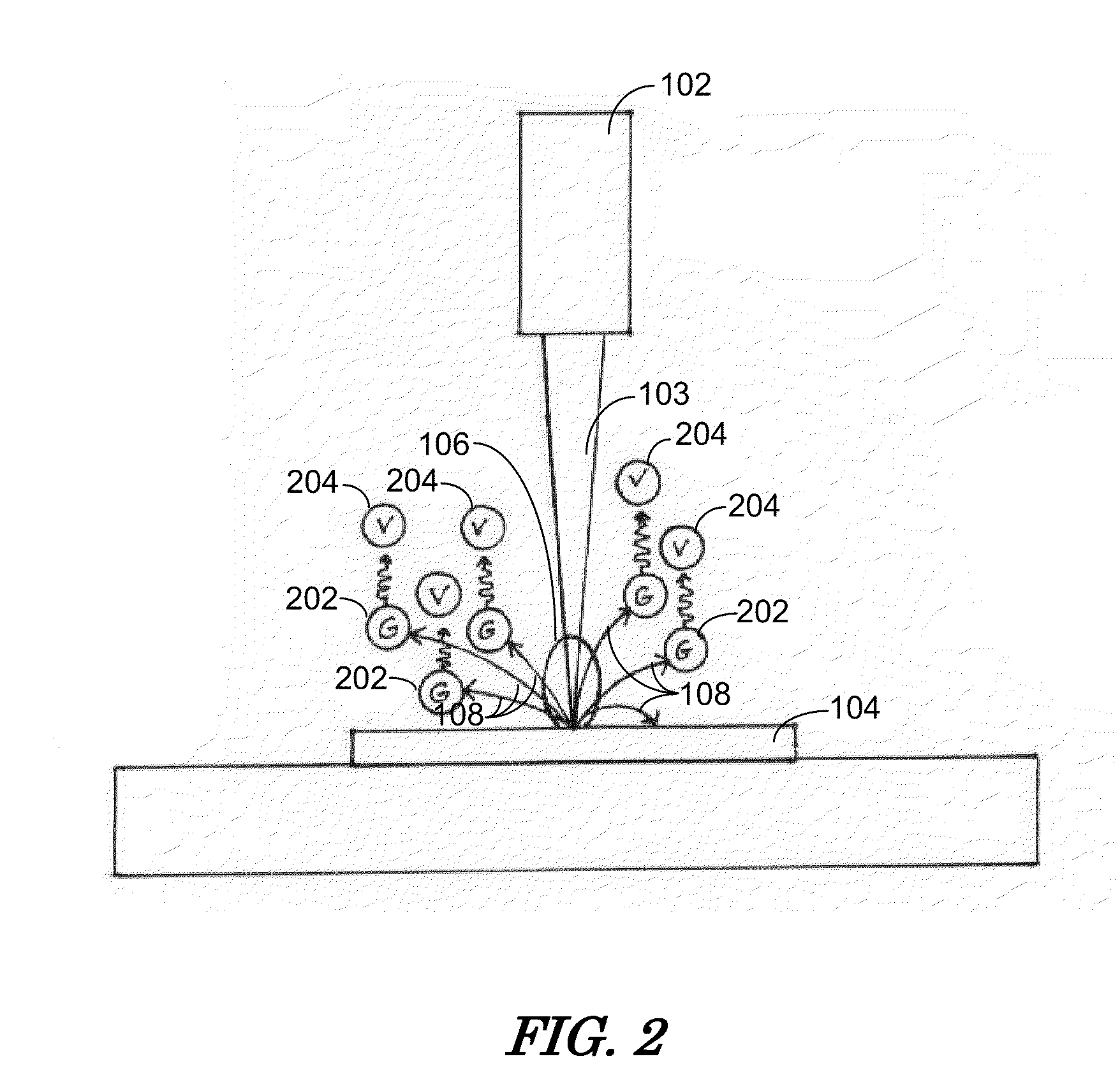Gas-assisted laser ablation
a laser and laser technology, applied in the field of laser micromachining for fabricating microstructures, can solve the problems of poor process resolution, limited photochemical etching rate, concomitant thermal damage to nearby structures, etc., and achieve the effect of high ra
- Summary
- Abstract
- Description
- Claims
- Application Information
AI Technical Summary
Benefits of technology
Problems solved by technology
Method used
Image
Examples
Embodiment Construction
[0024]Although those of ordinary skill in the art will readily recognize many alternative embodiments, especially in light of the illustrations provided herein, this detailed description is exemplary of the preferred embodiments of the present invention, the scope of which is limited only by the appended claims.
[0025]As described above, laser ablation is capable of rapidly removing a massive amount of material from a surface. Much of the material removed, however, is redeposited onto the surface, reducing the quality of the cut and decreasing cutting efficiency. As also described above, gas-assisted milling is used to reduce or eliminate redeposition in charged particle beam systems. Similar techniques have been employed with laser beam systems. Due to the relatively massive amount of material removed during laser ablation, the familiar mechanism of gas-assisted milling using a focused ion beam is of little or no benefit. A monolayer of an etchant gas adsorbed onto the sample surfac...
PUM
| Property | Measurement | Unit |
|---|---|---|
| energy | aaaaa | aaaaa |
| vacuum pressure | aaaaa | aaaaa |
| vacuum pressure | aaaaa | aaaaa |
Abstract
Description
Claims
Application Information
 Login to View More
Login to View More - R&D
- Intellectual Property
- Life Sciences
- Materials
- Tech Scout
- Unparalleled Data Quality
- Higher Quality Content
- 60% Fewer Hallucinations
Browse by: Latest US Patents, China's latest patents, Technical Efficacy Thesaurus, Application Domain, Technology Topic, Popular Technical Reports.
© 2025 PatSnap. All rights reserved.Legal|Privacy policy|Modern Slavery Act Transparency Statement|Sitemap|About US| Contact US: help@patsnap.com



